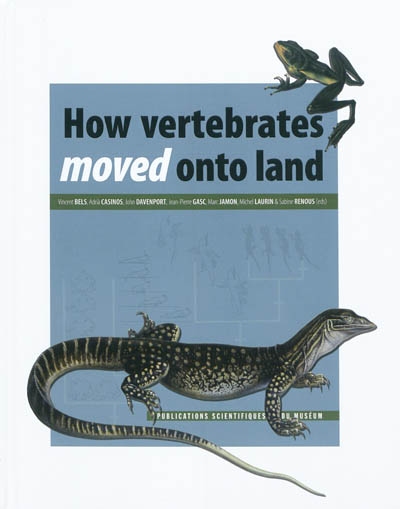en savoir plus

Carte fidélité
Permet à tous ses détenteurs d'obtenir 5% de réduction sur tous les livres lors du retrait en magasin (réduction non cumulable avec les réductions de type étudiant).
Offre également un certain nombre d'avantages auprès de nos partenaires.
Wishlist
Avec les favoris, retrouvez dans un espace les sélections effectuées au fur et à mesure de vos navigations dans le site.
Constituez pour votre usage personnel vos listes de livres en prévisions d'achats futurs et votre sélection d'articles, dossiers, événements, vidéos ou podcasts préférés ou à découvrir plus tard...
Il suffit simplement de cliquer sur "Ajout Favori" sur chaque page qui vous intéresse pour les retrouver ensuite dans votre espace personnel.
Requiert un compte Mollat
Mes Alertes
Requiert un compte Mollat
How vertebrates moved to land
en savoir plus
Résumé
L'histoire évolutive de la locomotion des vertébrés sur la terre ferme faisant appel à l'anatomie comparée, à la paléontologie, à la biologie du développement, à la phylogénétique, à la physiologie, à l'écologie et aux sciences de l'environnement. ©Electre 2025
Lire la Quatrième de couverture
Réduire la Quatrième de couverture
Among vertebrates, the evolutionary transition from an aquatic or amphibious to a fully terrestrial life seems to have occurred potentially more than once within the clade. These events probably occurred in the Carboniferous. New selective pressures faced by the first amphibious or terrestrial vertebrates due to environmental constraints in their new environments generated drastic changes in locomotor structures, performances and strategies in vertebrates. To explain « how vertebrates moved onto land », this volume presents a comparative investigation of locomotion, from structure to motor control, in fossil and living groups. The present volume provides an up-to-date integrative study on these, based on morphology, physiology, palaeontology, biomechanics, behavioral ecology, and neurobiology. The first paper shows how the hypotheses about transition changed through time. The two following papers show how our knowledge of locomotor structures of vertebrates suggests a possible scenario explaining this evolutionary transition. However, locomotor performance and motor control in extinct taxa can be inferred only from extensive analysis of locomotor modes (i.e., walking, trotting, running, jumping, hopping) in recent organisms relevant to the evolutionary transition from water to land. In three other papers, locomotor performances are studied through comparative approaches in fully aquatic vertebrates, in vertebrates transitorily inhabiting terrestrial environments, and in vertebrates which have definitively passed through the transition to permanently terrestrial occupation.
Fiche Technique
Paru le : 22/07/2011
Thématique : Biologie
Auteur(s) : Non précisé.
Éditeur(s) :
Publications scientifiques du Muséum
Collection(s) : Mémoires du Muséum national d'histoire naturelle
Contributeur(s) : Préfacier : Philippe Janvier
Série(s) : Non précisé.
ISBN : 978-2-85653-667-4
EAN13 : 9782856536674
Reliure : Relié
Pages : 200
Hauteur: 28.0 cm / Largeur 22.0 cm
Poids: 900 g
